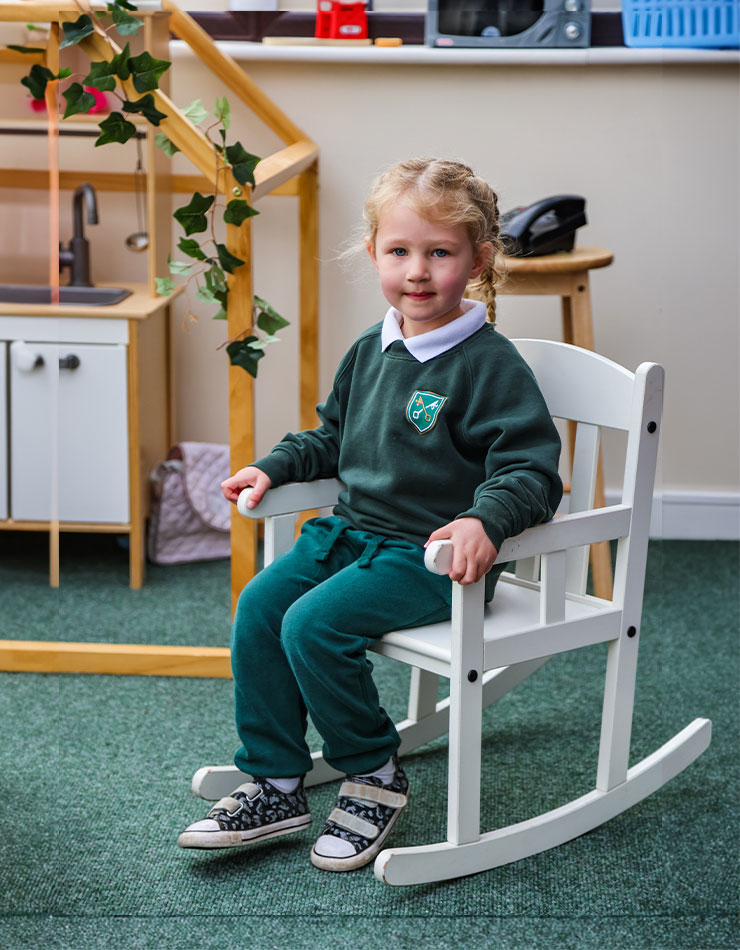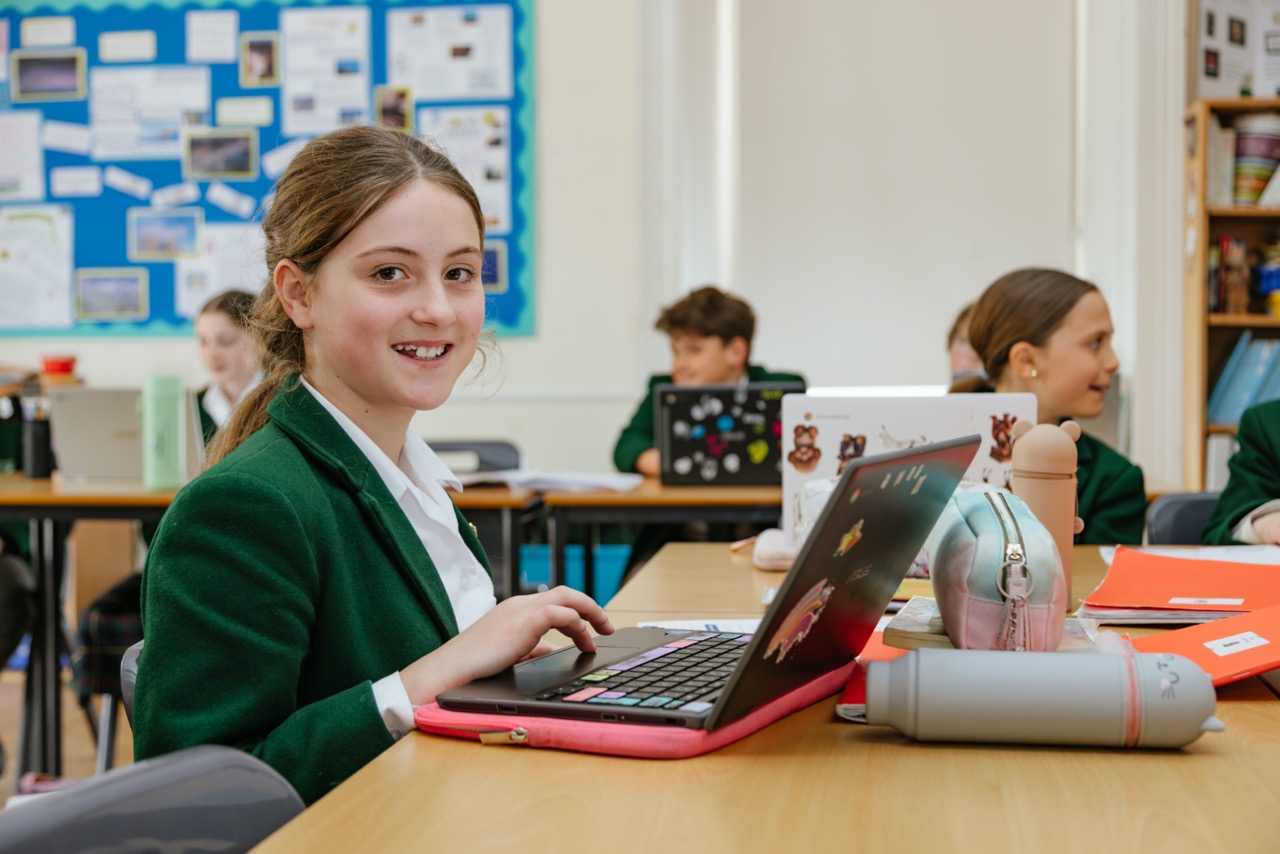Dyslexia is a common learning difficulty that affects many children and adults. It can significantly impact a child’s ability to learn in a traditional classroom setting, impacting their reading, writing, mathematical, phonological, and auditory processes. At our independent school in Devon, St Peter’s Preparatory, we support students with dyslexia through additional teacher support and a variety of other ways.
No matter their abilities, we encourage our students to recognise their strengths and talents, boosting their confidence and allowing them to feel comfortable and appreciative of who they are as individuals.
What is Dyslexia?
Dyslexia is common among many children and adults and mainly affects reading, writing, and spelling. Studies show that around 1 in 10 people in the UK has some degree of dyslexia. For many, it presents challenges during school and everyday life, where reading and writing are involved. However, dyslexic individuals are often more creative and have better problem-solving skills.

Signs of Dyslexia in Children
Some children with dyslexia may experience only one or a few of the following signs, and it’s important to remember that dyslexia differs from person to person. These signs may become more apparent when a child starts school or focuses on learning activities such as reading and writing.
- Reading very slowly and making many mistakes when reading aloud.
- Difficulty writing.
- Poor or inconsistent spelling.
- Confuse the order of letters in words.
- Feel like the text is ‘jumping off the page’ and becoming muddled up.
- Other visual distortion when reading text.
- Confusing letters that look similar (like ‘b’ and ‘d’).
- Difficulty when planning or organising.
- Find it hard to maintain focus and listen.
- Easily distracted.
How Does Dyslexia Affect Learning?
Dyslexia can make it difficult for a child to excel academically in a typical and traditional classroom environment. As mentioned above, dyslexia poses many challenges in reading, writing, spelling, mathematics, and processing information.
How Do Schools Help Children with Dyslexia?
Schools can implement many methods to support students with dyslexia. Firstly, if our teachers or parents suspect a child may be dyslexic, we always encourage them to take a dyslexia test, which we will arrange. This will help provide clarification, and we can give the proper support needed.
Here are some ways schools can support children with dyslexia:
1. Additional Support During Class
At St Peter’s Prep, our class sizes are much smaller than at other schools. This allows our teachers to give more time and attention to individual students needing additional support, encouraging those with dyslexia to feel more comfortable and supported in the classroom.
If children could benefit from even more support, they can always receive extra support from a teaching assistant in class.

2. The Use of Dyslexic-friendly Fonts
Dyslexic-friendly fonts can help to combat the challenges that dyslexic students face when reading. Fonts such as ‘Dyslexie’, a font designed by a dyslexic graphic designer, Chris Boer, aim to increase the contrast between letters, which reduces the risk of confusion. This typeface is an extension on Chromebooks, Windows, and Apple computers.
3. Encourage Computer Use
Allowing children with dyslexia to use computers in classrooms will enable them to take advantage of many dyslexic-friendly features, such as the Dyslexie font plug-in, voice recognition programs, spell checkers, and text-to-speech software. Handwriting can be a real struggle for pupils with dyslexia, so allowing them to use a computer or laptop means they can focus on the quality of their content without worrying about punctuation and grammar.
4. Focus on the Child’s Strengths
Dyslexic individuals are often very creative and can think outside of the box. Focusing on the positives and their strengths allows children to build their self-esteem, giving them the tools and confidence they need to pursue what they want.
Although children with dyslexia may struggle with reading and writing, studies show that they are better problem solvers, more creative and observant, have higher levels of empathy, can think three-dimensionally, and are brilliant at making connections.

5. Harness Multi-sensory Activities
The traditional teaching method can be challenging for dyslexic students, so implementing multi-sensory activities like flashcards, puppets, videos, presentations, and games that encourage kinaesthetic learning is a more effective and engaging teaching method.

6. Give Exam Support
Dyslexic students are entitled to both a reader and a scribe, extra time, supervised rest breaks, and sometimes assisted software and modified papers when sitting examinations. We also allow our students with dyslexia to sit their exams in a separate room to minimise distractions and reduce overwhelming feelings.
7. Provide Extra Time
Additionally, we give our dyslexic pupils extra time when sitting examinations. This gives them more time to process information, compensating for challenges faced when reading and writing.
7. Encourage Writing Strategies
Many invaluable writing tools are suitable for dyslexic pupils. These include coloured keyboards, line readers, pocket spell checkers, smartpens, and specialised software, such as computer text-to-speech software.
8. Communicate with Parents
At St Peter’s Prep, we have a brilliant pastoral care system that ensures all our students are fully supported. We also encourage communication with parents throughout your child’s educational journey to discuss their progress and keep updated with helpful strategies working at school and home.
Staying in the loop benefits the school, students, and parents. It allows all parties to keep up to date with what is working well so we can tailor our teaching approach to suit the pupil’s individual needs.









